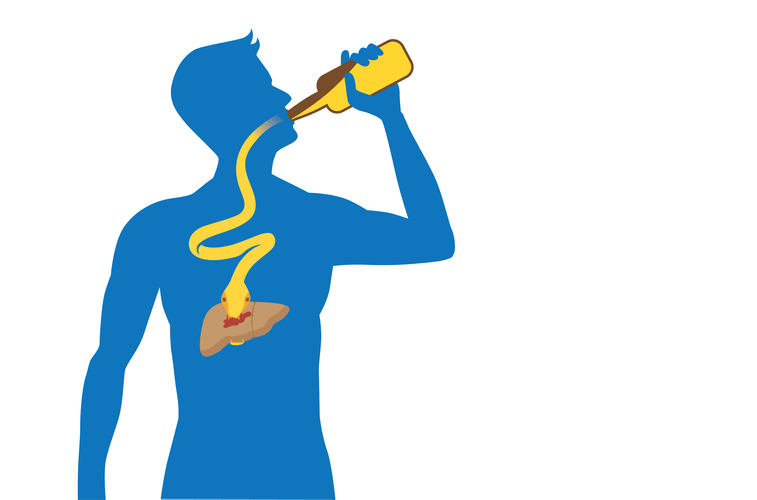Individuals experiencing a stimulant overdose should stay hydrated and cool. If they begin to have a seizure, ensure no harmful objects are close to them. There are a range of treatments available for different kinds of drug overdose. Anyone receiving an opioid prescription should speak with their doctor to learn more about the risk of overdose.

What is a Drug Overdose?
In part this is to ensure that there are no delayed injuries to any organ https://po-wyroku.webwbudowie.pl/psychological-dependency-key-to-understanding/ system. It is also to make sure that prevention against a recurrence is in place. If you have a problem with drug abuse, you may see an addiction specialist and a counselor to help deal with your addiction. Stopping the medication, then “re-challenging” it later, is one method of testing whether the symptoms are caused by the medicine.

Tell emergency responders everything you know
With certain medications, drug toxicity can also occur as an adverse drug reaction. In this case, the normal therapeutic dose of the drug can cause unintentional, harmful, and unwanted side effects. Drinking too much and too quickly can lead to significant impairments in motor coordination, decision-making, impulse control, and other functions, increasing the risk of harm. Continuing to drink despite clear signs of significant impairments can result in an alcohol overdose, which is sometimes referred to as alcohol poisoning.
Immediate Actions to Take
- Electrocardiography (ECG) is recommended in all patients with suspected opioid overdose.
- Treatment involves inducing vomiting if consumption is within an hour or so.
- If you are struggling with drug addiction, it is important to seek professional help.
- Poisoning is when exposure to a toxic substance makes you sick or harms you.
- Treatment must start early to be effective, before the effects begin.
For example, overdosing on opioids adversely affects an individual’s ability to breathe. This lack of oxygen can cause organ damage, unconsciousness, and even death. The Centers for Disease Control and Prevention (CDC) indicate that 106,699 people died of a drug overdose in the United States in 2021. Drug poisoning (or drug overdose) is the most common type of poisoning in adults.
If possible, have on hand the pill bottle, medicine package or other suspected container so that you can refer to its label when speaking with the poison control center. It is important to be aware that LSD often has other drugs combined with it, thus complicating the toxic effects. If any additional symptoms are noticed beyond what was mentioned, seek veterinary care immediately. As mentioned, these tests are not 100% accurate, and assuming your pet has not consumed drugs based on the test may cost them their life. If your pet shows any symptoms of toxicity, IMMEDIATELY take them to a veterinarian, as time is of the essence. Dogs can be exposed via ingestion, inhalation, and through the skin.
It can result in adverse reactions that can be life-threatening, causing damage to organs like the liver or kidneys, or leading to other significant health issues. Anyone experiencing symptoms of an overdose should seek emergency medical care immediately. Even after administering this medication, it is crucial to take anyone experiencing an opioid overdose to the emergency room. While poison prevention can prevent long-term health effects or be lifesaving, several treatments Halfway house are available to counteract the type of poisoning a person may have. These range from administering different medications to inhaling pure oxygen. Nisa Samar has a Psychology degree and brings expertise to ChoicePoint’s blogs, with over 7 years of contributing valuable insights on substance abuse prevention, treatment, and recovery.
- These common overdose symptoms include chest pain, stomach upset, confusion, and headaches.
- Conversations around overdose safety might feel difficult, but they’re vital.
- By remaining by their side, you can provide support and reassurance during a distressing time.
- You’re not alone — whether you need to talk to someone about what’s happened or you’re looking for treatment for opioid use disorder.
The opiates most commonly involved in adults experiencing seizures are propoxyphene and meperidine. Hearing loss may occur in rare cases, particularly in individuals who have consumed alcohol with heroin. Propoxyphene is an opiate analgesic once prescribed to manage mild pain and cough. Sporadic cases of poisoning with this drug continued even after it was withdrawn from the American market in 2010 due to concerns about serious adverse cardiac events. Despite the ban, the drug remains available illegally and contributes to a significant number what is drug toxicity of poisonings each year. Naloxone can reverse the toxicity of propoxyphene but does not address the cardiac arrhythmias caused by the drug.

How to spot and stop a drug overdose: symptoms, action steps, and prevention
Treatment for withdrawal symptoms is supportive, and the use of additional opiates to counter withdrawal symptoms is not recommended. Clonidine may be used in severe withdrawal cases, especially when methadone is inappropriate or unavailable. After acute treatment, the patient should be referred to a long-term drug rehabilitation program to help prevent relapse.
Signs of a fentanyl overdose are similar to other opioid overdoses, including slowed or stopped breathing, blue lips or nails, and unresponsiveness. Because fentanyl is often mixed with other substances, many people may not realize they’ve taken it. A drug overdose occurs when an individual ingests or is exposed to a larger amount of a substance than their body can safely handle. The excessive amount of the substance overwhelms the body’s normal physiological processes, leading to potentially life-threatening consequences. A drug overdose occurs when an individual takes more of a substance than their body can handle. This can happen with both illicit drugs and prescription medications.
Signs of a Drug Overdose and What You Should Do
Endocarditis is a serious complication of intravenous drug use, often resulting from injecting illicit drug mixtures with contaminated needles. Diagnosing infectious endocarditis can be challenging due to the initially vague symptoms. While right-sided heart valves are most commonly affected, left-sided valves may also be involved in some cases. The tricuspid valve is the valve most frequently affected in individuals who use intravenous drugs. Endocarditis often presents with fever, malaise, and a new murmur. In some patients, recurrent septic pulmonary embolism may be the only presenting feature.
This first stage is called the “induction phase,” which is just a way to describe the early period where your body adjusts to the medication. This treatment has proven highly effective for people struggling with various substance dependencies, including opioids, Kratom, and Tianeptine. If you’re worried about your relationship with substances (or someone else’s), it’s okay to take that concern seriously. When you take it as prescribed (dissolved under the tongue), the naloxone has minimal effect. However, if someone attempts to inject Suboxone, the naloxone activates, potentially triggering withdrawal symptoms rather than a high. Fentanyl is often mixed into other drugs, sometimes even without the dealer knowing.
If they aren’t breathing or are showing other signs of a drug overdose, call 911 and provide as much information as possible to the operator. It is vital to have medical professionals on the scene to treat the person overdosing. Symptoms of a drug overdose vary between substances and it can sometimes be difficult to tell the difference between typical side effects of a substance and the signs of an overdose. You may need to give an additional dose of the emergency opioid overdose reversal medication as you wait for emergency services to arrive. An opioid overdose happens when opioids overwhelm the part of your brain that controls breathing.
